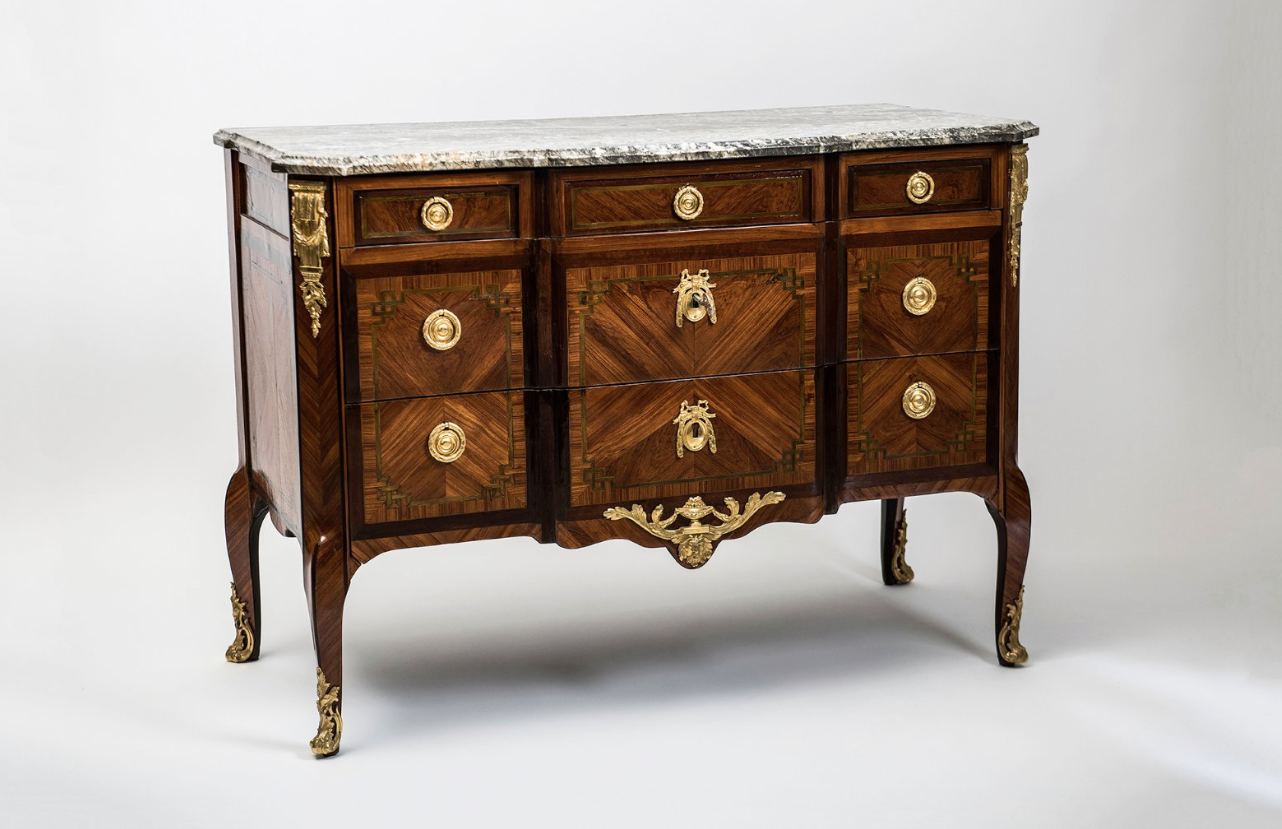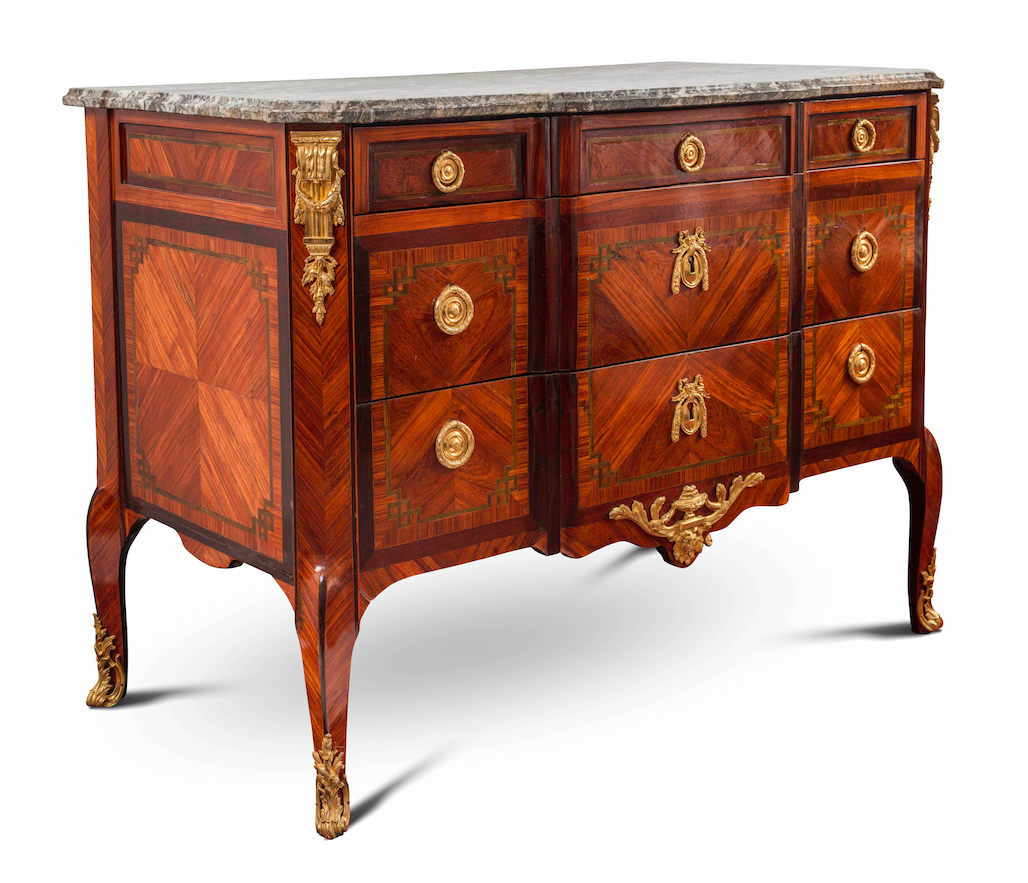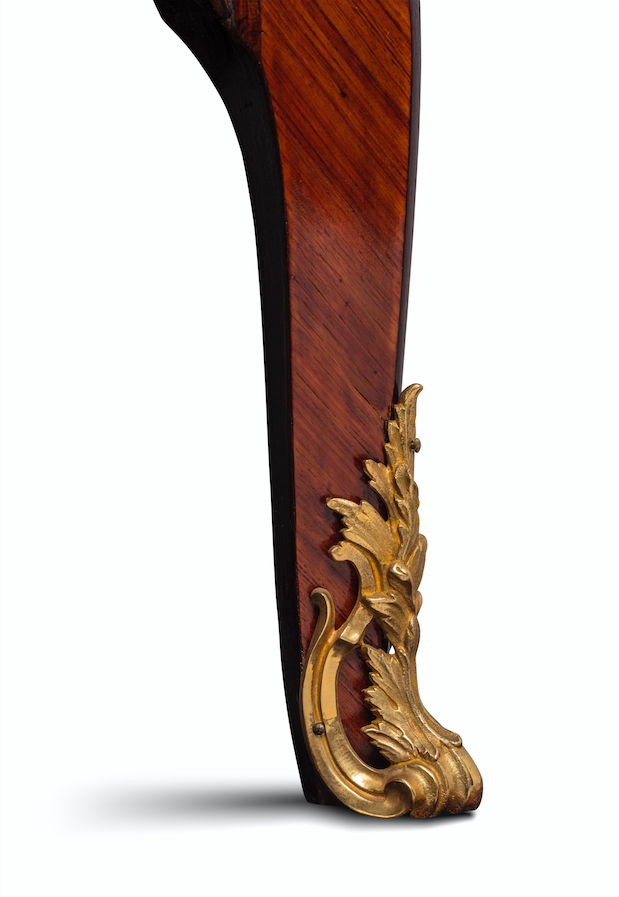18th Century Transitional Commode (SOLD)
The French commode table above is from the period of transition between the Louis XV and Louis XVI styles. The body is straight sided, but the legs remain rococo as master furniture makers hesitated to fully embrace the new neoclassical/rectilinear style. The sides are veneered with kingwood and rosewood in a “butterfly wing” fashion, and framed with green Greek borders.
The gilded bronze ornamentation, however, is totally neoclassical. Finely chiseled wreaths of laurels form the drawer pulls on the five drawers which lock from one central mechanism. The piece has been well maintained and re-varnished (wax would have originally been used), and all the bronze hardware as well as the grey veined marble is period correct.
These commodes demonstrate the purely curvilinear “Louis XV” style being eclipsed by new rectilinear tastes that reemerged during the middle of the century. The Roman city of Pompeii was discovered in 1748, sparking newfound interests in the straight forms and decorative vocabulary of classical antiquity. King Louis XV’s favourite, the Marquise de Pompadour, facilitated this style overhaul by sending her brother on a grand tour of Italy in 1752. All Paris was reportedly “Greek” by 1761, and neoclassicism only grew throughout the rest of the century and well into the 19th century. It wasn’t until Art Nouveau circa 1890-1910 that another totally “new” (and divorced from the forms of the ancients) style emerged.
H: 33.5 inches. L: 45.5 inches. D: 24 inches.
Myers & Monroe, LLC


